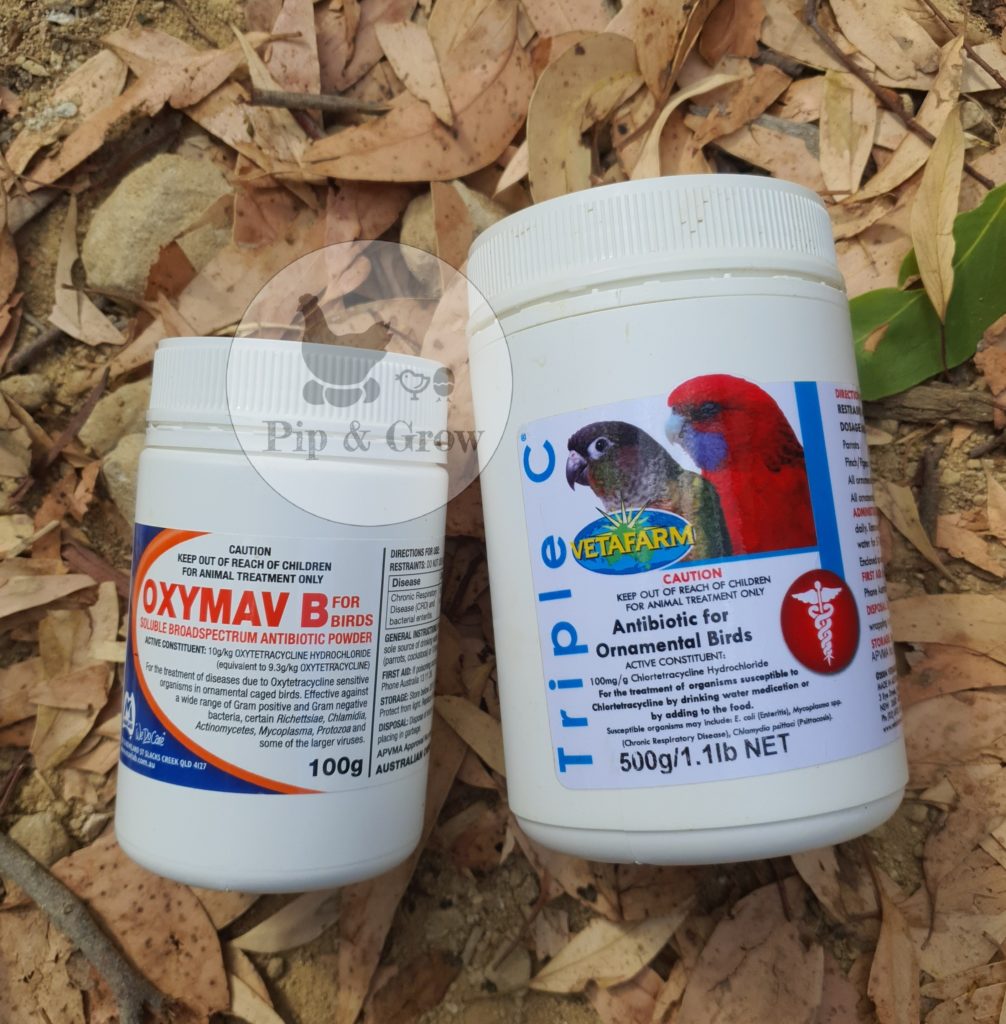
Use of Antibiotics
Antibiotics are medications designed to combat bacterial infections by either killing bacteria or inhibiting their growth. While ideally, they should be avoided unless necessary, responsible use is crucial to prevent antibiotic resistance and safeguard the health of chickens.
Most important thing to remember – antibiotics are ineffective against diseases caused by viruses. While they may help alleviate secondary infections or symptoms resulting from a viral infection, they won’t directly treat the underlying viral illness. For example, if a bird is displaying respiratory symptoms like sneezing and coughing due to Infectious Bronchitis (IB), antibiotic treatment would be ineffective. However, if the respiratory symptoms are caused by bacterial infections like Coryza or Mycoplasma, antibiotics can be effective. Therefore correct diagnosis is important avoid unnecessary use.
Many keepers mistakenly give antibiotics along with supplements or poultry vitamins, believing it will aid in the bird’s recovery. However, it’s crucial to read the product label or follow a vet’s directions when using antibiotics. Some antibiotics can react with certain nutrients, negating their effectiveness. For example, Triple C should not be given with any calcium supplements. Always administer medication as directed, ensuring the bird has access to clean water and feed. Any beneficial supplements can be provided after the medication course is finished, during the recovery stage.
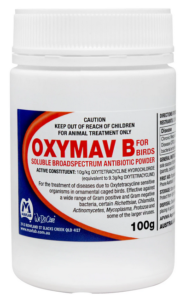
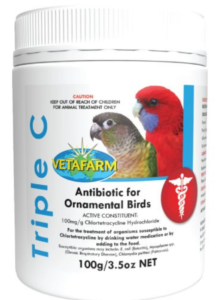
Oxymav B & Triple C
Oxymav B and Triple C are commonly used antibiotics among poultry keepers, often as first-line options due to their accessibility. They are readily available at pet stores and fodder shops and are frequently recommended for treating common respiratory illnesses in poultry. While some poultry keepers may praise these antibiotics for their effectiveness in treating sick chickens, others may have had less favorable experiences. Preferences for one over the other can vary among poultry keepers.
The reality is that every case is unique; even if chickens exhibit similar symptoms, the underlying cause of illness may differ. This could include bacterial or viral infections, environmental factors, or other health issues. Therefore, treatment outcomes can vary, and it’s crucial to consider each case individually.
Oxymav B 100g | Triple C 100g |
| 10g/kg Oxytetracycline hydrochloride | 100mg/g Chlotetracyciline Hydrochloride |
| =10g/1000g = 1g/100g | = 0.1g/g =10g/100g |
| Lowest price online $20.00 (25/03/24) for 1g of antibiotic | Lowest price online $36.00 (25/03/24) for 10g of antibiotic |
| Meat withholding 7 days Egg withholding Do not use | Meat withholding 7 days Egg withholding Nil |
Oxytetracycline and Chlortetracycline are both members of the tetracycline antibiotic class and are used in veterinary medicine for similar purposes. While both antibiotics have a broad spectrum of activity against various bacterial species, Chlortetracycline may have a slightly broader spectrum compared to Oxytetracycline.
Even though the price of Triple C appears to be higher than that of Oxymav B for the same 100g, according to the provided product information and a basic calculation, when administered at equivalent dosages, Triple C may be ten times more potent than Oxymav B.
Both products are labeled with the disclaimer “Not for use in birds intended for human consumption.” Information regarding withholding periods stated above table obtained from PIRSA.
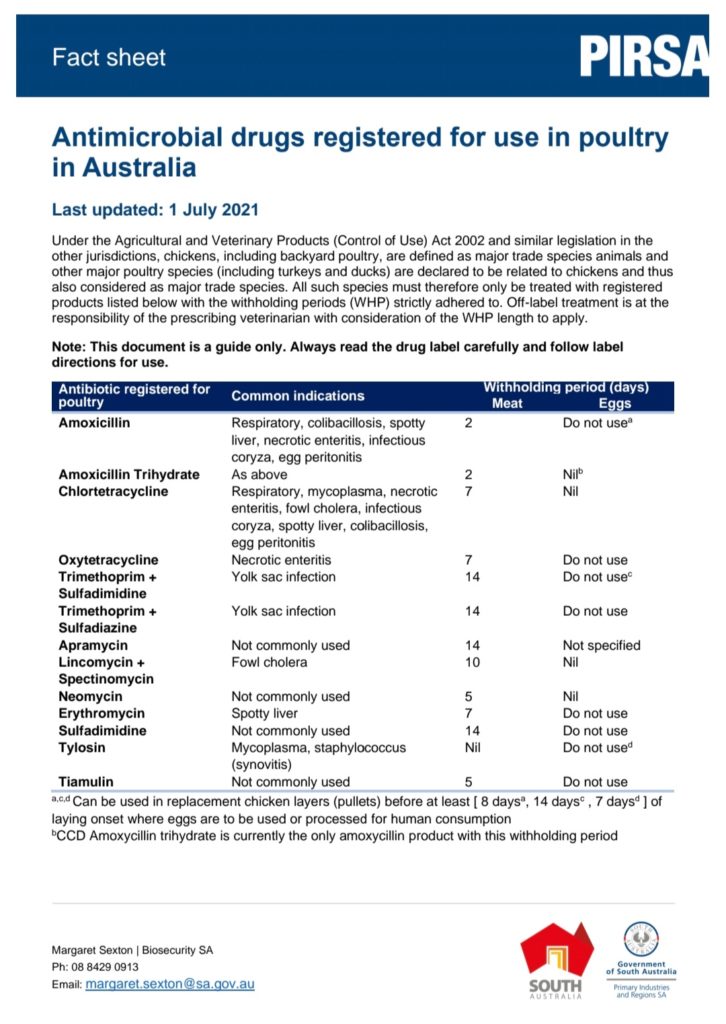
Treating Entire Flock
Encountering comments recommending the treatment of the entire flock with antibiotics as a preventive measure against respiratory diseases in poultry is not uncommon. While poultry respiratory diseases can indeed be highly contagious and concerning, such advice may provide a sense of reassurance to poultry keepers. However, before opting for widespread “Over the Counter” antibiotic treatment without proper vet diagnosis, there are several important considerations to keep in mind.
- Overuse of Antibiotics: Excessive use of antibiotics can contribute to the emergence of antibiotic-resistant bacteria, posing a significant public health risk. Treating healthy birds unnecessarily may foster the development of antibiotic resistance within the flock.
- Unnecessary Exposure to Medication: Administering antibiotics to healthy birds can expose them to unnecessary medication, which may lead to potential adverse effects or disruptions in their gut microbiota. It’s essential to use antibiotics only when necessary to avoid unnecessary stress on the birds’ immune systems and overall health.
- Difficulty in Identifying the Sick Bird: Without proper diagnostic testing, it can be challenging to accurately identify which bird in the flock is sick. Administering antibiotics to the entire flock based on the observation of one sick bird may not effectively target the underlying cause of the illness and could result in ineffective treatment.
- Missing out on Identifying the Strong Bird: During a disease outbreak, it’s typical for not all birds in the flock to be affected. Some may exhibit resilience and remain unaffected due to possessing natural antibodies. These birds are valuable, as they may carry strong genetic traits that contribute to their resistance to diseases. Ideally, if you’re considering breeding, you’d want to prioritize these resilient individuals to pass on their robust genetic characteristics to the next generation, thereby enhancing the overall health and disease resistance of your flock.
- Increased Costs: Treating the entire flock with antibiotics can be costly, both in terms of the medication itself and the labor involved in administering it to all birds. Using antibiotics judiciously and selectively targeting treatment to individual sick birds can help reduce unnecessary expenses.
Instead of administering antibiotics to the entire flock, it’s advisable to isolate the sick bird and treat individuals accordingly. If multiple birds exhibit similar symptoms and the illness appears to be spreading, seeking guidance from a specialist avian veterinarian is recommended. A professional veterinarian can conduct a proper autopsy and diagnosis, providing expert advice tailored to the specific situation. Following professional guidance ensures appropriate treatment measures are taken, rather than relying solely on over-the-counter antibiotics.
What to do next?
Considering the potential causes of the outbreak is essential. Have there been recent introductions of new birds to your flock? Are there instances of wild birds or rodents accessing the pens? Is it from outside or inside the property? What could I have done better to prevent it?
Creating a plan is crucial, as poultry respiratory diseases can persist long-term, and even birds that have survived or show no symptoms can be “Silent Carriers”. These carriers can infect any new birds introduced to your flock. One of the most common poultry respiratory diseases, Mycoplasma (Chronic Respiratory Disease), can spread through fertile eggs laid by carrier hens. Chicks hatched from these eggs can become carriers themselves, and outbreaks may occur when the chicks experience stress within a few weeks of hatching, which can potentially cause so much heartache for other people if eggs are sold to others.
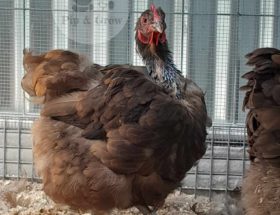
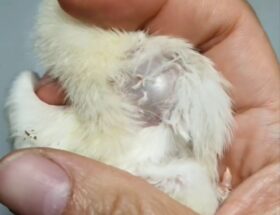
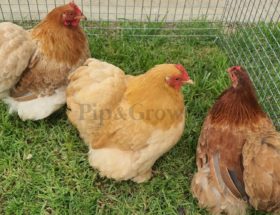
Very informative and accurate summation.
I would love to know more about where you purchase your vaccines from, what ages you administer them and what route, – ocular, injection, oral, topical etc.
Thank you for your comment Joanne.
We have contacted our vaccine supplier, and each vaccine is handled and administered differently. As we are not qualified veterinarians, we are unable to provide advice or information regarding vaccination in any form.
For the most accurate and safe guidance, we strongly recommend reaching out to a local poultry or avian vet who can assist you with the specific information you’re after.